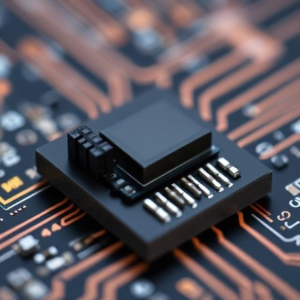Microelectromechanical Systems (MEMS) sensors are tiny devices that combine mechanical and electrical components at a microscopic scale. These sensors are widely used in automotive systems to monitor and control various vehicle functions. Let’s break down how MEMS sensors work and their role in modern cars:

1. What Are MEMS Sensors?
MEMS sensors are made using tiny structures, like beams, springs, or diaphragms, that can move or flex when exposed to certain forces, like acceleration, pressure, or tilt. These movements are detected by electrical circuits and turned into readable signals.
2. How Do MEMS Sensors Work?
At the heart of a MEMS sensor, there are small mechanical parts that can move. For example:
- A pressure sensor might have a small diaphragm that bends when pressure changes.
- An accelerometer has tiny beams that bend when the vehicle speeds up or slows down.
When these mechanical parts move, they change the electrical signals in the sensor. This change is processed and turned into data that the car’s computer can understand and use.
3. Types of MEMS Sensors Used in Automotive Systems:
MEMS sensors are used in various automotive applications. Some of the most common types include:
- Accelerometers: Measure changes in speed or direction. In cars, they are used in airbag systems to detect sudden deceleration (crashes).
- Gyroscopes: Measure the orientation or rotation of the vehicle. They help with stability control and navigation systems.
- Pressure Sensors: Monitor tire pressure, oil pressure, and even cabin air pressure to ensure optimal performance and safety.
- Temperature Sensors: Measure the temperature of engine parts, coolant, and even cabin air for comfort and performance.
- Microphones: In some advanced systems, MEMS microphones can be used for sound recognition, like detecting tire noise for advanced driver assistance systems (ADAS).
4. Role of MEMS Sensors in Automotive Systems:
- Airbags and Safety Systems: MEMS accelerometers play a crucial role in airbag deployment. They detect sudden changes in velocity, triggering the airbags in the event of a crash.
- Vehicle Stability: MEMS gyroscopes and accelerometers help monitor the vehicle’s tilt and motion, improving stability control, and helping systems like Electronic Stability Control (ESC).
- Tire Pressure Monitoring: MEMS pressure sensors in tire monitoring systems alert the driver if tire pressure is too low, helping to improve safety and fuel efficiency.
- Fuel Efficiency: Sensors can monitor engine conditions and help optimize fuel usage. For example, a MEMS pressure sensor in the intake system can measure air pressure and help adjust the fuel-air mixture for better efficiency.
- Infotainment and Comfort: MEMS microphones in the car’s infotainment system can help with noise cancellation and improve voice recognition accuracy.
5. Advantages of MEMS Sensors in Automotive Systems:
- Small Size: MEMS sensors are incredibly tiny, which allows for integration into various parts of the vehicle without taking up much space.
- Low Power Consumption: These sensors require very little power to operate, making them ideal for battery-powered or energy-efficient systems.
- High Precision: MEMS sensors provide accurate and reliable measurements, which are essential for systems like airbags or stability control.
- Durability: MEMS sensors are designed to withstand harsh automotive environments like temperature extremes, vibrations, and shocks.
6. Future of MEMS Sensors in Cars:
As cars become smarter and more automated, MEMS sensors will play a growing role in making them safer and more efficient. For example:
- Autonomous Vehicles: MEMS sensors will help self-driving cars understand their environment, detect obstacles, and improve navigation.
- Electric Vehicles: MEMS sensors will help monitor the performance of electric motors and batteries, ensuring optimal energy use.
Conclusion:
MEMS sensors are tiny but powerful components that help modern vehicles operate more safely, efficiently, and intelligently. They are crucial for a variety of systems, from airbags to tire pressure monitoring, and will continue to evolve as technology advances, making cars smarter and more connected.
Tags: (MEMS), Accelerometers, airbag systems, automotive safety, automotive sensors, autonomous vehicles, battery monitoring, durability, electric vehicles, Electronic Stability Control (ESC), engine monitoring, fuel efficiency, gyroscopes, high precision sensors, infotainment systems, low power consumption, mechanical-electrical components, MEMS microphones, MEMS sensors, microelectromechanical systems, Noise Cancellation, pressure sensors, self-driving cars, sensor applications in cars., sensor data processing, Sensor integration, sensor miniaturization, smart cars, temperature extremes, Temperature Sensors, tire pressure monitoring system (TPMS), vehicle control systems, vehicle navigation, vehicle stability, vibration resistance, voice recognition


